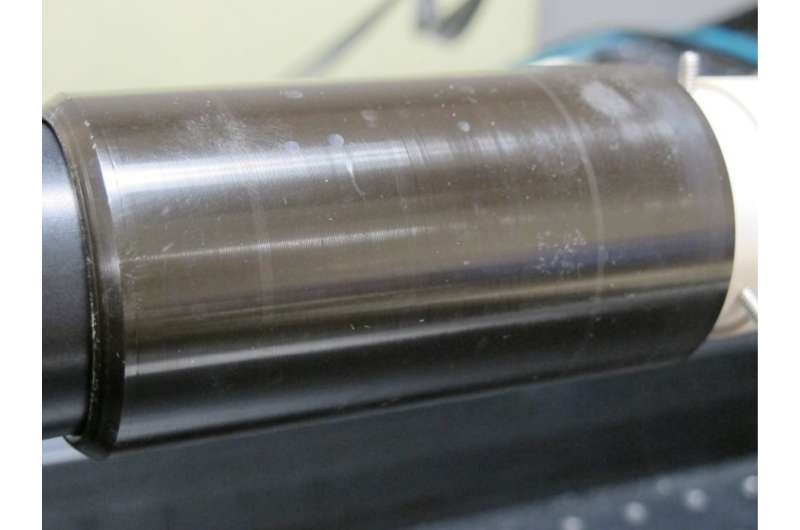June 18, 2018 report
Optical scanning technology used to restore wax recordings of indigenous languages

A team of researchers at UC Berkeley has embarked on a project to save wax recordings made a century ago using modern technology—they are calling it the "Documenting Endangered Languages" initiative. As they describe in a post they have made on the UC Berkeley Library website, the group has plans to use optical scanning technology to retrieve the recordings and then to save them in digital format.
The recordings were made using the Edison phonograph (some in 1900 and some in 1938) and are part of a collection of recordings of indigenous people speaking, singing or praying. The recordings were made by anthropologists interested in studying the languages spoken by indigenous people in California. The subjects sang or spoke into the wide-open end of a megaphone connected to a device that recorded the sounds onto wax cylinders. Those cylinders now reside at Berkeley's Phoebe A. Hearst Museum of Anthropology. Over time, the cylinders have degraded or have been damaged in other ways. In this new effort, which is part of a larger effort called Project IRENE, the team plans to transfer those songs or spoken words from the wax cylinders to digital media to preserve them.
The optical scanning method used by the group was developed by a team at Lawrence Berkeley National Lab and is based on a chromatic confocal microscope. It works by taking very precise measurements of the cylinder as it rotates. The measurements are then used to create a three-dimensional map of the cylinder. Another computer is used to read the maps and specially designed software converts it to sound. In addition to recovering sound from the cylinders, the software can also filter noise.
The initiative is being sponsored by the National Science Foundation and the National Endowment for the Humanities. The goal is to transfer and preserve approximately 100 hours of audio representing 78 indigenous languages, many of which no longer exist. Retrieving them from the cylinders, the researchers note, is the only way to preserve them. They report that some of the results will be made available online. Others, will not, however, as they represent culturally sensitive material.
More information: exhibits.lib.berkeley.edu/spot … digitization-process
© 2018 Tech Xplore


















